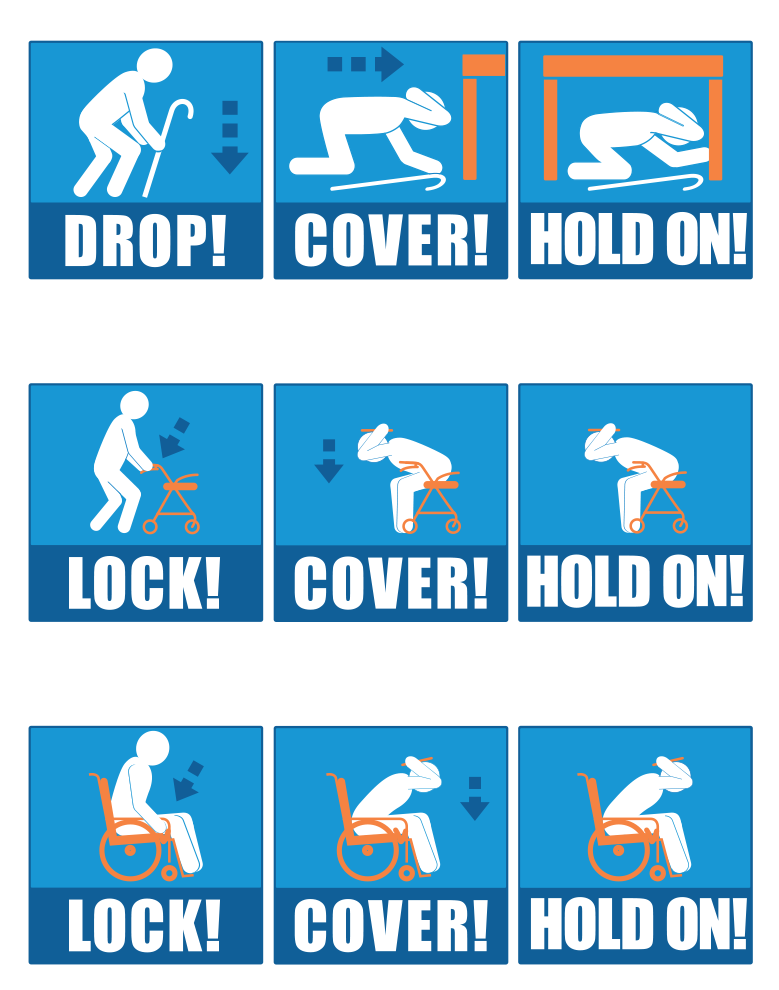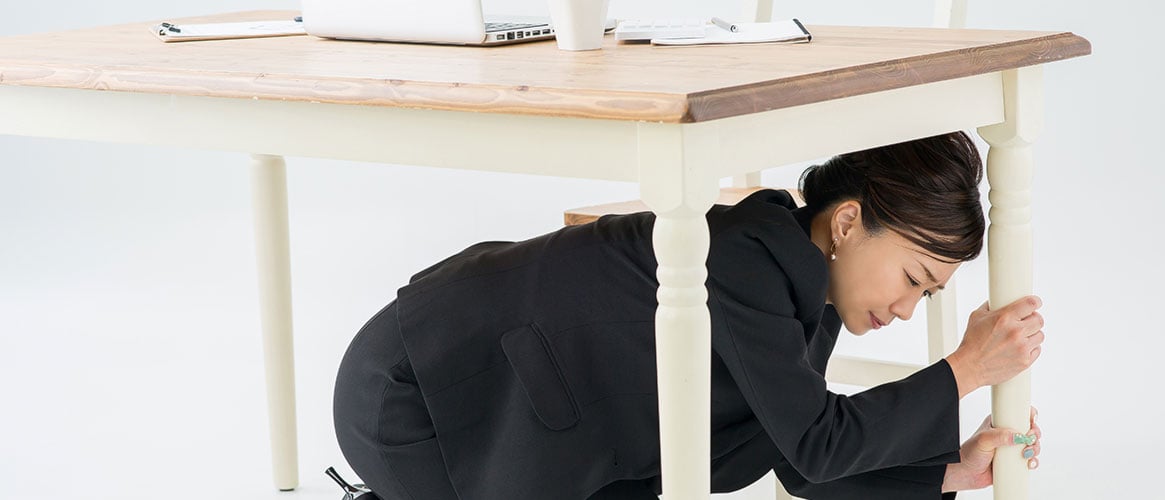You’ve prepared the workplace as best you can, but what happens when the ground starts shaking? Even if you’ve done everything you can to secure your workplace, windows may break, objects could become airborne, and employees may panic. This is not the time for confusion or to start asking questions. Everyone needs to act quickly, knowing exactly what to do and how to protect themselves.
What your employees need to know about actions they need to take during an earthquake
Old advice, such as go to the nearest doorway or run outside is bad advice. It’s considered dangerous and is not recommended.
The one method that is considered the safest and most effective earthquake response is Drop, Cover, and Hold On. We practice it throughout the world during the Great Shakeout each October. You can also practice this drill throughout the year.
What your employees need to do during an earthquake: Drop, Cover, and Hold On
As the name suggests, these are the three steps that must be taken when the shaking starts:
- DROP to your hands and knees.
- COVER your head and neck with one arm and hand. If possible, crawl under a nearby table or desk, or next to an interior wall away from windows.
- HOLD ON to a table or desk with one hand until the shaking stops.
Of course, not everyone will have access to a table or desk to crawl under during an earthquake. What if you employ people with disabilities? What if you’re outside? What if you’re driving? Drop, Cover, and Hold On has you covered in these and other situations.

For those with disabilities: If you use a wheelchair, lock the device, lean forward and cover your head, then hold on. If you use a walker with a seating pad, you’ll also need to lock the device, then sit down on the seating pad, and cover your head. If you use a cane or other assistive device to walk, see the Earthquake County Alliance’s Accessibility Resources.
For those outside: Stay outside. Drop to the ground as soon as the shaking starts, then crawl only a short distance to a clear area, away from trees, power lines, signs, or any other hazard. Injuries often occur when people try to move more than a few feet during earthquakes.
For drivers: Immediately pull over to the curb or shoulder and stop the car; then set the parking brake. Stay away from overpasses, bridges, power lines, or any other hazard, as these can fall on top of your vehicle. Stay inside the car until the shaking stops. Once the earthquake is over, proceed with caution and avoid fallen debris, cracked roads, and emergency vehicles.
For those in a store: Drop to the ground right away. If you can, crawl next to a shopping cart or under a clothing rack for cover. Hold on as best you can.
What to cover at your safety meeting on earthquake response
Practice the Drop, Cover, and Hold On drill. With California’s earthquake history, it’s a good idea to practice this drill a few times during the year. Since your employees could be just about anywhere when an earthquake happens, make sure to modify your training to include the information above about being outside, driving, or in a store.
If you employ people with disabilities, include the Drop, Cover, and Hold On modifications for these employees, to ensure they can find safety during an earthquake.
More information on what to do in other specific situations from the Earthquake Country Alliance. But whatever situation you're in, remember Drop or Lock, Cover, and Hold On, three simple steps to protect yourself during an earthquake.
After you practice Drop, Cover, and Hold On with your employees, review and discuss the results and make any needed improvements. Next, discuss with your staff what to do after an earthquake.

